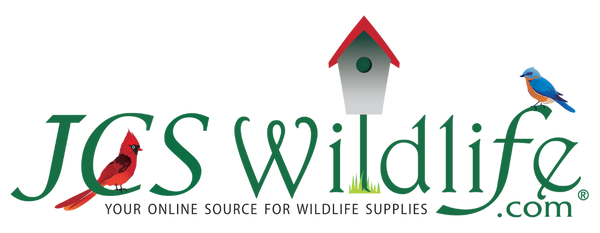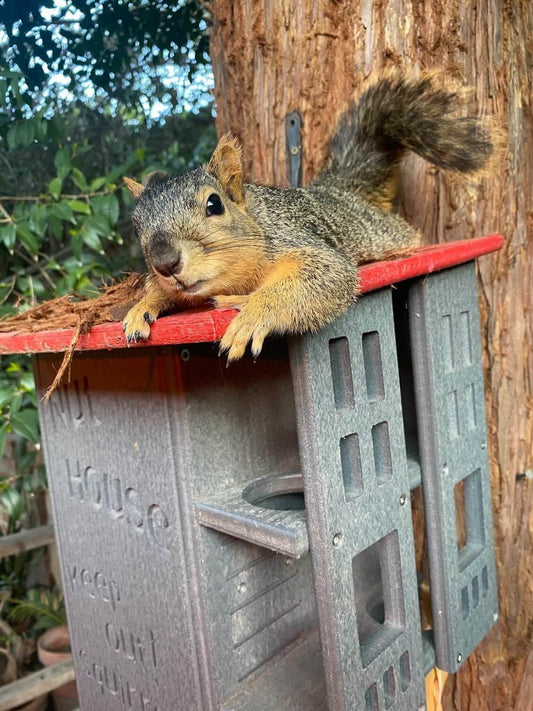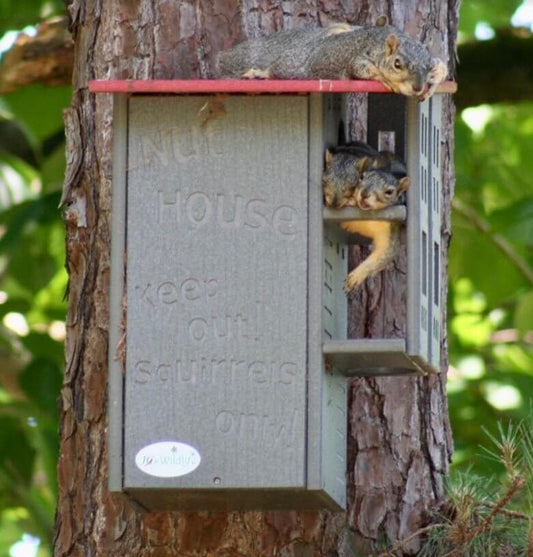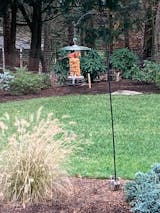
Acrobatic, cheeky, and mischievous, a squirrel’s escapades can provide endless entertainment or wreak havoc to any backyard.
Whether you are looking to learn more about these bright-eyed and bushy-tailed creatures or seeking a way to keep them away, sometimes the best plan of action is to join them instead of trying to out-smart them at their own game.
Oddly enough, having a squirrel house nesting box is one of the best tools to both attract and defend a home from these nutty critters.
What Do Squirrels Look For in a Home?
Squirrels are self-sufficient animals that are capable of building their own nests, or dreys, in trees.
Dreys are made of clumps of sticks, leaves, bark, moss, and any other material in nature that a squirrel finds useful and can easily be molded together.
Dens are also used as a type of shelter squirrels will dig in the ground for themselves to store food. However, these forms of shelter are not always the safest, can take time to build, and be even harder to defend from unwanted visitors.
This is where squirrel house nesting boxes come in!
Squirrels look for homes that will keep them warm in the winter, their babies safe during mating season in the spring and summer, and their precious food away from thieves. Unfortunately in their hunt for these things, sometimes squirrels find refuge in unwanted places like attics, chimneys, or in between walls of homes.
This not only creates a headache for the owner but can quickly become a pest control problem, especially if they are breeding. Providing a nesting box can encourage squirrels to remain outside instead of inside a home.
Much like how humans like to protect their homes, so do squirrels.
Raccoons and opossums are top predators of squirrels. It does not help that these larger, furry creatures also know a thing or two about digging and crawling around to get what they need.
A good squirrel house is built with an entrance hole just big enough for the squirrels to fit into, but small enough that these larger predators cannot find a way in.
An additional predator guard built on the outside of the entrance hole will further prevent a raccoon or opossum trying to use their paws to reach inside the nesting box. This helps ensure the baby squirrels are tucked away safe and sound.
Predatory birds like eagles and hawks are known to hunt and pick up squirrels and will not be able to access them in a squirrel house nesting box.
Squirrel houses provide a great source of shelter in an unlikely place: urban landscapes. The need for providing nesting boxes for squirrels in urban areas is on the rise due to a few reasons.
Despite increasing construction and less natural habitation, several urban communities still have large populations of squirrels scavenging their streets. However, with the lack of trees and other shrubberies it can be difficult for them to find a place of their own.
This can cause squirrels to invade apartments and other communal areas. Spreading out squirrel houses throughout cities can help squirrels find shelter without becoming a nuisance to urban communities.
Beyond the basic necessities that a squirrel house nesting box can provide, it can also offer a fun, enjoyable and educational experience for all ages.
Be a firsthand witness to the cycle of mating season during spring through mid summer and watch the squirrels grow from babies and beyond! It is also a great way to see these furry inhabitant’s feeding patterns and how they can utilize nesting boxes to store their food and other treats.

How to Choose a Squirrel House Nesting Box?
There are a variety of features and functions to look for when choosing a squirrel house.
One of the most important items to consider is the type of material it is made from and it's durability. Since squirrel houses are not something one would want to have to deal with re-installing or fixing several times, a material like JCs Wildlife’s recycled poly lumber is most ideal.
Recycled poly lumber is beneficial for the environment. It helps keep plastics out of landfills. Additionally, it is strong and resistant to cracking and fading. This helps ensure a long lasting lifespan and many years of use for the squirrels!
Another great option for squirrel houses to come in is exterior grade plywood. Though this option will naturally break down over time and not last as long as the recycled poly lumber, it is often more wallet-friendly.
Squirrels typically have two litters twice a year in early spring and mid summer. This makes fall an ideal time to clean out the nesting box.
It is also recommended to check in on the box after periods of harsh weather outside of the mating season window. During this time, squirrels may have sought out safety for long periods of time.
Finding a squirrel house that is easy to clean and accessible should not be overlooked.
An easy option to look for is a door towards the front of the house that swings upward to open. If the door swings up then the nest can easily be brushed out and fall to the ground without anything getting in the way or dirtying up a separate spot.
Safety features are of utmost importance when choosing to utilize a squirrel house in your backyard.
One of the top reasons a squirrel will choose to use the house is to nest and raise babies in a safe place, away from a predator’s view.
Built in predator guards can help ensure other animals like raccoons or opossums cannot get access into the squirrel house. It is normal to see a predator guard on the outside of the house just beyond of the entrance hole squirrels use to enter and exit the box.
An extra predator guard can be built inside the house, creating a split-level like home. This makes it nearly impossible for any other visitor to find its way to a family of squirrels.
Proper ventilation and drainage holes are also a necessary feature to look for to ensure adequate air flow and temperature control.
Tips and Tricks to Install a Squirrel House Nesting Box
Once a safe and sturdy squirrel house has been picked out it is time to install it!
It would be ideal to have a helping hand during the mounting and installation process. These houses can become quite heavy to simultaneously lift and drill into position on the tree.
Choosing a house with a door that swings open in an upward motion can also provide a good grip and leverage while drilling into the tree.
Mounting the nesting box securely in a tree at least 12-30 feet high will best ensure the squirrels and their babies are safe and snug from any potential predators or wet and windy weather.
As with most real estate, location of the squirrel house is important. First, choosing the right type of tree will ensure squirrels find the house. The best type of trees to place squirrel houses and nesting boxes are hardwood and nut-producing trees.
Do not place it on a tree close to a road or other high traffic areas. This could potentially deter them.
Squirrel houses should not be installed on the side of barns or garages. These places do not typically provide easy access for entrance. It is also recommended to not install on a flat surface like a fence post. This could be an easy way for predators to get to them.
A great place to install squirrel houses, and to encourage squirrels to nest is near squirrel feeders and snack stations.
Put peanuts in the squirrel cage once it is set up. This will increase the likelihood that squirrels will move into the house faster.
Whether looking for simple backyard entertainment, working to rescue and rehabilitate squirrels, or needing a way to keep them out of your house, squirrel house nesting boxes just may be the answer! Check out JCs Wildlife’s selection to start your own squirrely adventure!










2 comments